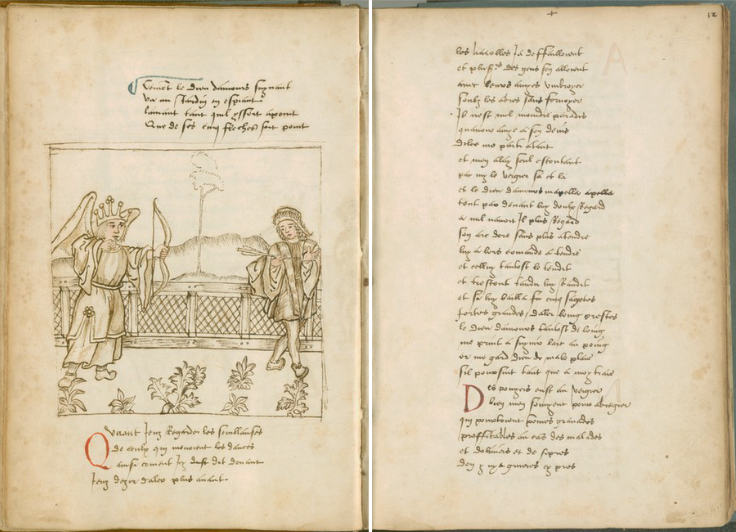Rose site users, we are delighted to announce that we have added another manuscript to our repository, Bibliothèque municipale de Grenoble 608, aka Grenoble 608. This 16th-century handwritten codex is chock full of illustrations – 88 pen and ink drawings, with light coloring in places, adorn the manuscript’s 143 paper folios. These fascinating depictions, which are somewhat amateurish in their execution, are accompanied by at times less-than-perfect scribal work. It seems the product of a smaller purse than some of the illuminated Rosemanuscripts, which makes it perhaps all the more alluring as an object of study. Was it copied hurriedly for a middle-class, middle-income household? Did the first owner pen the drawings themselves?
Image: Grenoble 608 ff. 13v-14r (orig. 11v-12r)
We have made some other small updates to our site to respond to requests and fix bugs in the system: the provenance of the Ferrell manuscript has now been corrected thanks to feedback from Peter Kidd (you can view his blog on Medieval Manuscripts Provenance, which includes a post about the Ferrell Rose here). Some users had noticed some problems with viewing the transcriptions that are available for some of the manuscripts – the Javascript problem, which was the culprit, has now been fixed.
Our project to tweet a modern English version of the Rose continues, you can follow us @RoseDigLib #RoseRom.


